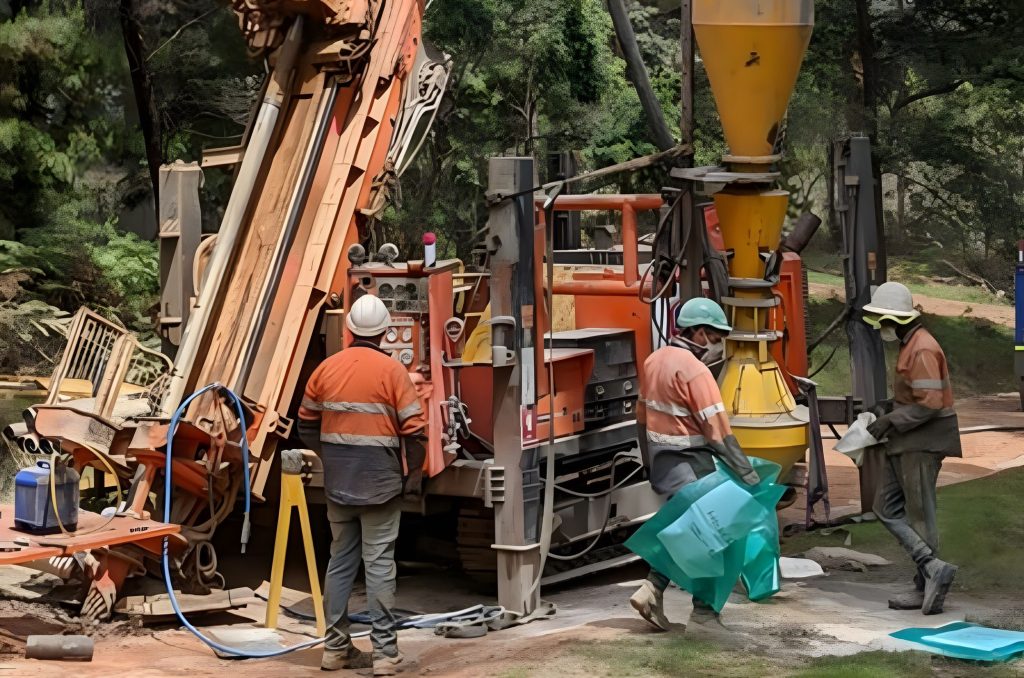Great Pacific Gold reports high-grade soil sampling and focused drilling program at Kesar, Papua New Guinea

Great Pacific Gold Corp. [TSXV-GPAC; OTCQX-FSXLF; Germany-V3H] provided an update on one of its core projects, the Kesar Project located in the Eastern Highlands province of Papua New Guinea. The Kesar Project is contiguous with K92 Mining’s mine tenements, with several high priority targets at Kesar near the K92 property boundary. Multiple veins at Kesar are on strike and have the same orientation of key K92 deposits, such as Kora, and exploration work to date at Kesar has shown that these veins have high grades of gold present in outcrop, very elevated gold in soil grades and are coincident with aeromagnetic highs.
Highlights: GPAC intends to focus its PNG exploration efforts over the near term on Kesar. A second round of soil sampling on the East, Central and West vein targets was recently completed.
The phase two sampling program has returned excellent results (Figure 2), including samples assaying: 47.6 g/t Au (soil); 35.7 g/t Au (soil); 94.3 g/t Au (rock) and 56.5 g/t Au (rock).
A Phase 1 diamond drill program has been designed to target high-grade epithermal vein style gold-copper mineralization with 2,000 to 3,000 meters of planned drilling. Drilling is expected to commence in October, utilizing two diamond drill rigs for two months.
“The results of the two phases of geochemistry highlight the tremendous potential of Kesar,” stated Greg McCunn, CEO. “With our recently announced plan to focus on our core projects, we intend to direct our financial and technical efforts on Kesar over the remainder of 2024. The high-grade nature of the nearby Kora deposit highlights the potential of Kesar and our Phase 1 drill program is designed to test our highest priority targets.
“While focusing on Kesar, we will continue to evaluate and advance the other core assets in our high-quality portfolio, including recent drilling at the Arau project, from which initial results are pending, environmental baseline work at Wild Dog and consolidation of our knowledge on the Lauriston and Walhalla projects in Australia. Longer-term, the recently acquired Tinga project also has the potential to create significant shareholder value.”
The Company received notification from the Papua New Guinea Mineral Resources Authority (the MRA) of the grant of Exploration License 2711, which wholly covers the Kesar Project. The notice was received on November 14, 2023 with the Exploration License in effect from October 31, 2023 for a period of two years until October 30, 2025.
Exploration by previous operators at Kesar identified the presence of semi-massive copper rich sulphide mineralization associated with quartz veins on strike to the Kora gold deposit, as well as the potential for copper-gold porphyry prospects within the tenement. Previous operator’s initial rock sampling programs returned high-grade gold-copper-silver values.
Thirty-two rock chip samples were taken in Q2 2024 from outcrop and artisanal underground works and returned high-grade assays including 244 g/t Au (underground working), 116 g/t Au (outcrop), 36.5 g/t Au (float) and 33.4 g/t Au (underground working). Of the 32 samples, 19 samples were above 1 g/t Au and 10 samples averaged 52.8 g/t Au. Recently, a further 17 rock chip samples have been obtained and assayed with a peak result of 94.3 g/t Au and 11 samples of greater than 1 g/t Au averaged 25.1 g/t Au. Generally, these samples were collected from the Eastern Vein Zone where itinerant miners are operating small scale mines though larger scale potential occurs as indicated by the soil sampling results.
In addition to the rock chip sampling in Q2 2024, a soil sampling program was completed principally targeting the West and Central Vein Zones at Kesar Creek. In total, the 332 soil samples returned numerous significant gold grades over a strike length of 5.5 km including a high-grade assay of 20.9 g/t Au.
The initial first-pass soil program used a 200 metre by 100 metre or 50-metre grid and was very broadly based to cover most of the known prospective ground and to get an indication of the location of the most prospective larger structures.
Gold mineralization was found in samples covering the entire 5.5 km of sampled strike. Multiple parallel vein sets occur in close proximity within each of the three main vein zones.
Following the success of the initial soil sampling program principally targeting the West and Central Vein Zones at Kesar, a second follow up soil sampling program was carried out in July 2024. The follow up soil program consisted of a further 667 soil samples covering the West, Central and East Vein Zones, which all strike northwest. This follow up program has further defined gold prospects in West and Central Vein zones while also discovering gold mineralization in the Eastern Vein zone, which is in part associated with the itinerant miners’ small-scale operations. The mineralization in the Eastern Vein Zone is open to the northwest where several parallel vein sets occur. More sampling will be carried out as the opportunities arise.
The company contracted Quest Exploration Drilling to provide two CS1000 P4 diamond drill rigs expected to be delivered to the drill site in October 2024 via a helicopter located near the project. Drilling is expected to occur from five drill pads spaced generally at 100-metre intervals along the Anteruno vein structure in the Western Vein Zone. Sectional drilling from the pads will provide coverage along strike of approximately 400 metres. The proposed drilling plan consists of 9 initial holes averaging 300 metres in length for a total diamond drilling program of ~2,700 metres.
Results from the drilling program are expected approximately four weeks after the completion of each drillhole and drilling is planned to take place for two months.
